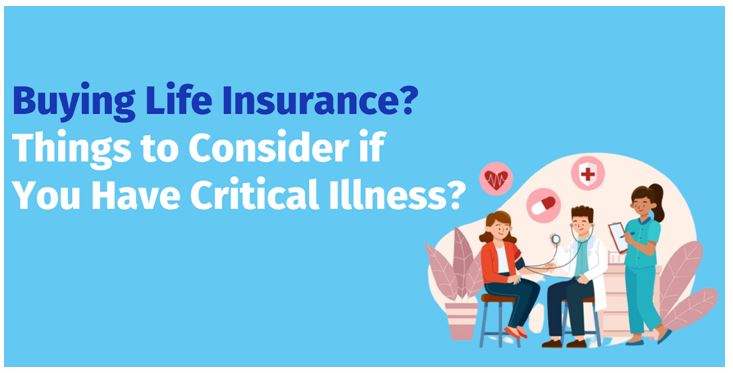Introduction
As the normal lifespan in the United States rises, insurance companies are devising strategies to ensure that Americans can pay for the pleasure of growing older. People formed critical illness insurance in 1996 after realizing that surviving a life-threatening disease may leave a patient with overwhelming medical expenditures. If you have critical illness insurance, you will be covered if you have one or more of the following emergency situations:
- Heart attack
- Stroke
- Cancer
- Diabetes
- Organ transplants
- Coronary bypass
Critical illness insurance can compensate for expenses that standard insurance can not cover. The funds can also be used for non-medical expenses linked to the sickness, such as transport and child care. In most cases, the insured will get a flat sum to cover these expenses. Coverage limitations vary—depending on your coverage, you might be eligible for a few thousand dollars all the way up to $100,000. A variety of factors influence policy price, including the quantity and scope of insurance, the insured’s gender, age, and wellness, and health history.
Why Indians Should Consider Critical Illness Insurance
With 77 million diabetic patients, India is quickly becoming the world’s largest diabetes capital. One in every sixth diabetic in the world is an Indian. If appropriate diabetes control techniques are not implemented during the next 25 years, the amount of Indians with diabetes is expected to nearly double to 134 million.
The condition affects both men and women similarly and grows with age. While diabetics account for 12% of individuals over the age of 50, those aged 70 to 79 have the highest prevalence, accounting for 13.2%. Diabetes, on the other hand, is not a disease that just affects the elderly. Pre-diabetes has been identified in 10% of Indian kids, putting them at risk of getting the illness in the future. Genetic factors, overweight, poor nutrition, and a lifestyle are among the risk factors that forecast an increase in Type 2 diabetes in India in the next few years. Diabetes is also causing an increase in the number of fatalities.
The rising prevalence of diabetes is a source of concern for many Indians. Families of people who die from diabetes may face significant financial hardship in the long run. As a result of this, one should consider buying life insurance for themselves as it could prove vital in the future. There are many types of life insurance options that are present in India Term insurance is also proven to be an important investment for Indian families in order to limit the financial risk of diabetes. When compared to a healthy person, term insurance becomes even more vital for a diabetic.
What is term insurance?
Term insurance is the most basic and least expensive type of life insurance. Its primary advantage is that it provides policyholders with a high sum insured at low premium rates. A diabetic, on the other hand, may question whether they are eligible for term insurance and, if so, whether they will be refused on medical grounds. The good news is that you may still get a term plan as a diabetic at an affordable price if you meet specific criteria.
Choosing Term Insurance; Things you should know!
When acquiring term insurance coverage for a patient, bear the following points in mind:
If your condition is under control, approval will be easier to obtain: Whether you have Type 1 or Type 2 diabetes, you may receive term insurance at a reasonable price if your disease has been under control for the previous 6 months due to regular treatment. The methods and means of your therapy can also influence the chances of your application being accepted with lower premium rates. Those who have their diabetes under control with a good exercise regimen/diet or through oral medicine are often seen more favorably by health insurance companies than those who need insulin to keep it under control.
Aside from diabetes, the following health problems or hazards exacerbate the problem: Obese diabetics, those with uncontrolled high blood pressure, those with a heart ailment, and those who smoke, on the other hand, are more likely to be denied or charged higher premium rates by insurers since they offer more risks. These medical factors exacerbate the situation in persons whose diabetes is uncontrolled.
The age of diagnosis is an important consideration: Diabetes is more likely to be covered if it is diagnosed early. Early diagnosis is defined as a diagnosis made before the age of 40. If you were identified as a diabetic early in childhood, you are at a greater chance of your condition wreaking havoc on your health, and so your premium rates will be higher. Conversely, the later you are treated with diabetes, the lesser the risk you offer to insurers, and the more likely you are to be able to acquire insurance at less, more inexpensive rates.
Type 2 Diabetes is Favored by Insurers: Those with Type 2 or Non-Insulin Dependent Diabetes Mellitus are more likely to receive low-cost term insurance quotations than those with Type 1 or Insulin-Dependent Diabetes Mellitus. This is due to the fact that the former is often an age-related illness that manifests itself in older people and maybe managed with oral medicine and insulin. Type 1 Diabetes, on the other hand, usually needs close medical care and management.
Your blood sugar readings are very important: The HbA1c (Hemoglobin A1c) test is the most accurate way of determining the degree of your diabetes. It assesses your typical blood sugar control levels throughout the previous two to three months. While A1c values of 7 are ideal, anything less than 7.5 shows that the disease is within control. Those with rates of up to 8.5, on the other hand, may get qualified for term insurance. Your regular fasting blood sugar readings may also be considered. Term life insurance policies are normally available to those with rates of up to 180.
Final Words
All the parameters above will be taken into account to determine how much of a risk you pose to the insurer before an applicable term insurance policy is offered to you. Do bear in mind that the premium to be paid might be higher as compared to that offered to an otherwise healthy individual.
However, those that put constant effort into keeping their diabetes levels in check and maintain a healthier lifestyle, in general, will usually be rewarded with lower premium rates. Based on the insurance carrier, you may or may not be required to have a medical examination. However, make sure to clearly and honestly report your condition in the full questionnaire supplied at the time of insurance acquisition.







